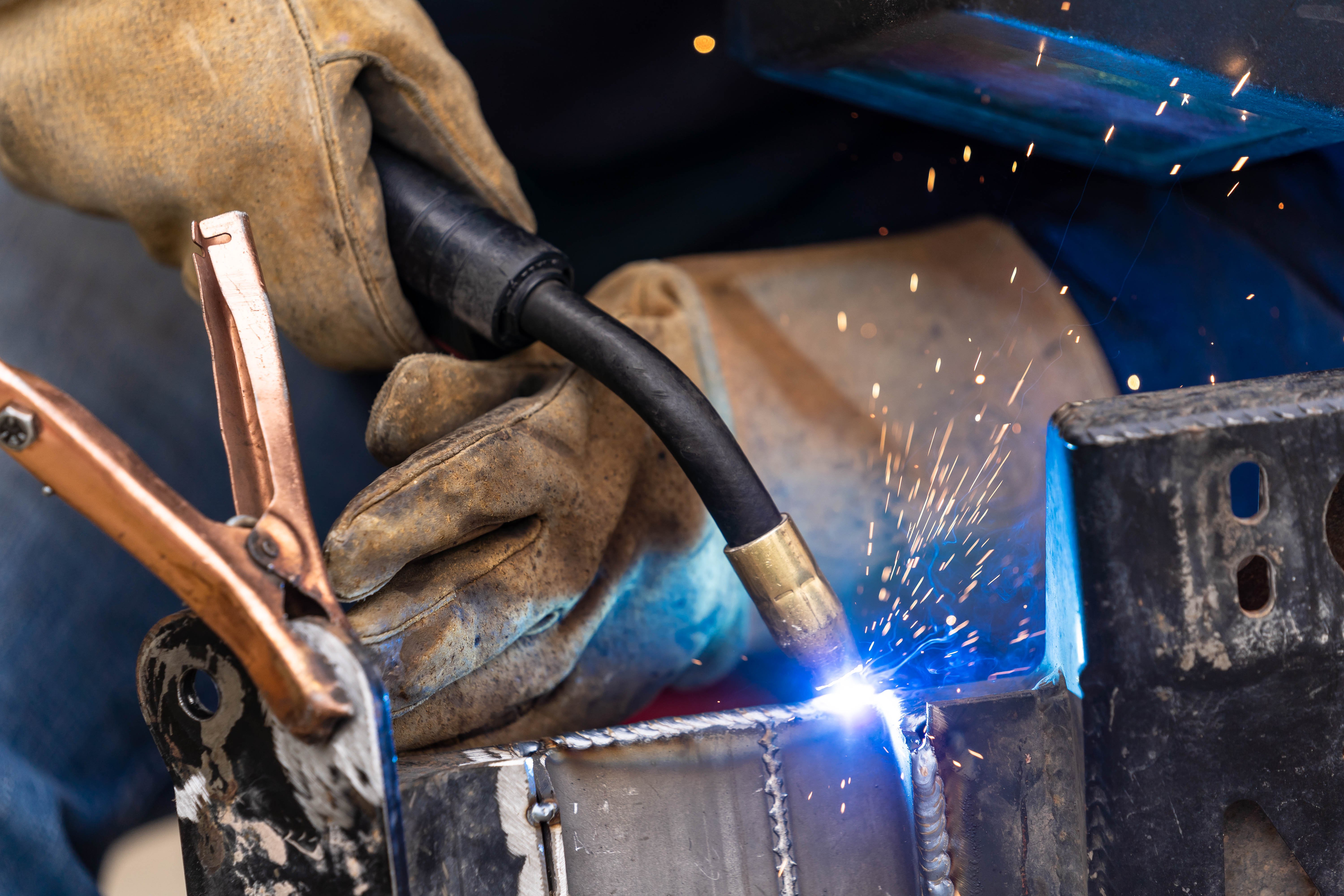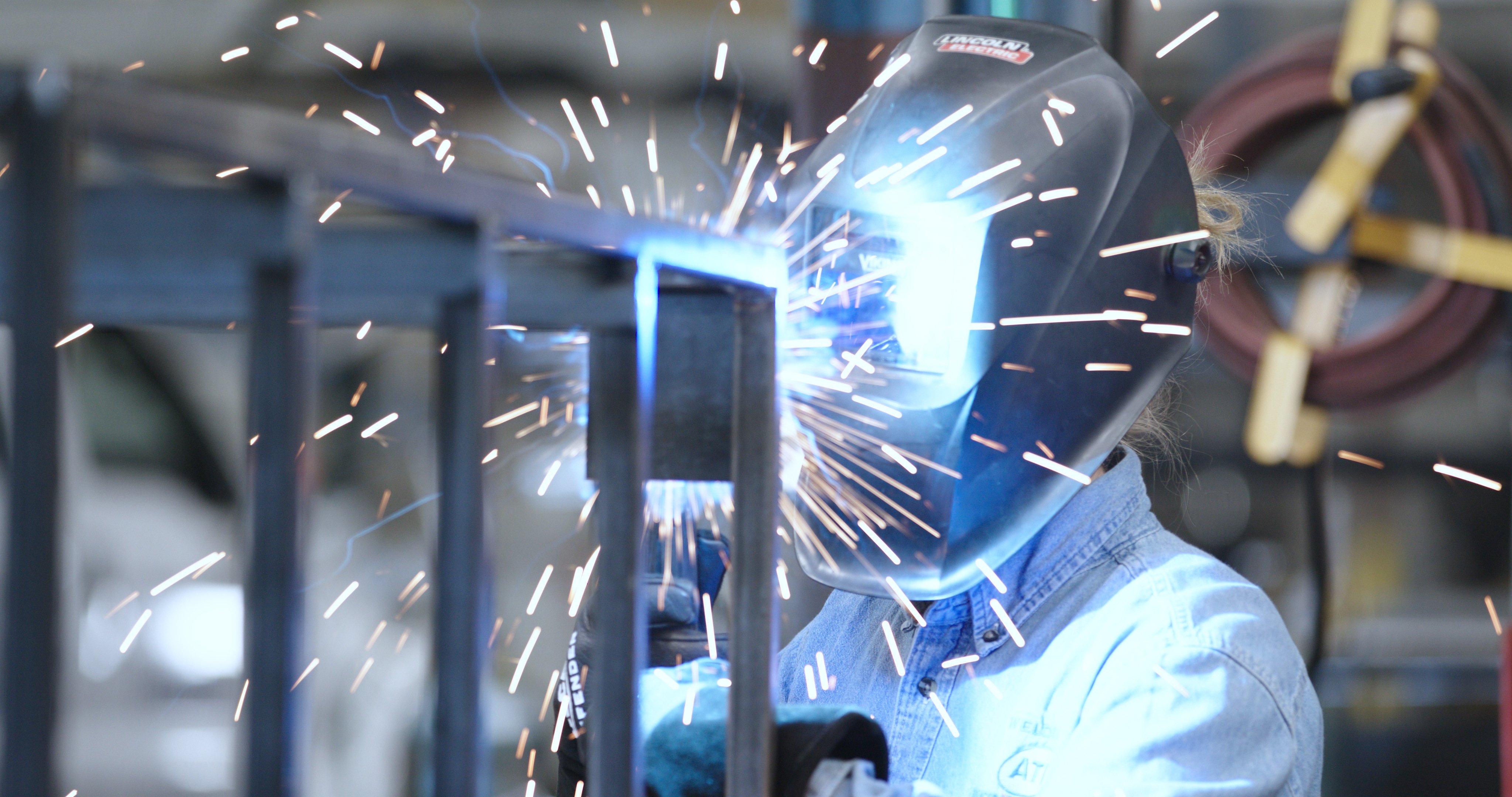Usual Welding Repair Service Issues and How to Address Them Efficiently
Welding fixings typically run into a variety of problems that can endanger the integrity of the final item. Usual troubles consist of insufficient infiltration, porosity, and misalignment, to name a few. Each issue offers unique obstacles that call for details methods for resolution. Comprehending these problems is important for welders intending to enhance their outcomes and skills. This conversation will discover these common welding repair service issues and efficient approaches to resolve them.
Poor Infiltration
Inadequate penetration occurs when the weld metal fails to fully fuse with the base product, resulting in weak joints and potential architectural failures. This concern often stems from inadequate warm input, wrong electrode angle, or improper welding speed. Welders might encounter insufficient infiltration because of a mistake of the essential criteria for a certain material density or type. Furthermore, contamination on the base product's surface area can prevent effective bonding, aggravating the issue. To address insufficient penetration, welders should ensure proper setups on their tools and preserve a clean work surface. Regular examination of welds is recommended to recognize any type of shortages early, enabling for timely adjustments and the avoidance of endangered structural stability in welded settings up.
Porosity
Porosity is a common problem in bonded joints that manifests as small gas bubbles trapped within the weld steel. This problem can jeopardize the stability of the weld, bring about decreased strength and prospective failure under stress. Montana Mobile Welding and Repair Fabrication. Porosity normally develops from contamination, dampness, or inappropriate welding techniques, which allow gases to escape right into the liquified weld swimming pool. To deal with porosity, welders should ensure appropriate surface area prep work, keep a clean working atmosphere, and utilize appropriate welding specifications. Additionally, selecting the right filler material and shielding gas can alleviate gas entrapment. Regular evaluation and testing of welds can help identify porosity early, guaranteeing timely restorative activities are taken, thereby maintaining the top quality and dependability of the bonded framework
Imbalance
Imbalance in welding can emerge from different elements, consisting of incorrect arrangement and thermal development. Understanding the source is crucial for effective resolution. A number of improvement methods are offered to realign parts and ensure structural honesty.
Reasons for Misalignment
Welding imbalance commonly originates from a variety of underlying concerns that can compromise structural honesty. One main reason is improper fit-up of parts prior to welding, which can lead to gaps and unequal surfaces. Variants in thermal development during the welding process can also result in distortion, particularly if the materials being signed up with have various coefficients of development. Additionally, poor securing and fixturing might fail to hold parts securely in area, bring about motion throughout welding. Badly conserved devices, including welding equipments and tools, may present variances in the weld bead, additional adding to imbalance. Driver error, stemming from inadequate training or experience, can also play a significant role in developing misaligned welds.

Adjustment Methods Available
Addressing imbalance properly requires a mix of restorative strategies tailored to the particular issues handy. One common approach is using jigs or fixtures to hold elements in the correct placement during welding, making sure regular placement. Furthermore, pre-heating the products can help in reducing distortion and boost fit-up. For significant misalignment, mechanical realignment methods, such as utilizing hydraulic jacks or clamps, can be utilized to remedy the placement prior to welding. Post-weld warm treatment may additionally be needed to ease stress and anxieties caused by misalignment. Mindful examination and change during the configuration stage can avoid misalignment problems from becoming significant issues, advertising a smoother welding procedure and boosting general architectural stability.
Distortion
Distortion is an usual challenge in welding that can occur from various variables, consisting of unequal cooling and heating. Comprehending the reasons of distortion is essential for implementing effective avoidance strategies. Addressing this issue not only boosts architectural stability however additionally boosts the general high quality of the weld.
Root causes of Distortion
When based on the intense heat of welding, products frequently undergo adjustments that can result in distortion. This sensation mainly arises from thermal development and tightening throughout the welding procedure. As the weld location warms up, the material increases; upon air conditioning, it acquires, which can develop inner tensions. Additionally, irregular home heating across a workpiece can exacerbate these stress and anxieties, causing bending or flexing. The sort of product additionally plays a substantial function; metals with differing thermal conductivity and coefficients of development might react in a different way, causing unpredictable distortions. Inadequate joint design and inadequate fixturing can contribute to imbalance throughout welding, raising the chance of distortion. Understanding these reasons is essential for efficient welding repair work and prevention methods.
Prevention Techniques
Efficient avoidance techniques for distortion throughout welding concentrate on managing warm input and ensuring proper joint style. Preserving a constant heat input assists to decrease thermal expansion and tightening, which can result in distortion. Utilizing methods such as pre-heating the work surface can likewise decrease the temperature gradient, promoting consistent home heating. Furthermore, selecting ideal joint layouts, such as T-joints or lap joints, can improve stability and minimize stress concentrations. Implementing proper fixturing to protect the work surfaces in position better aids in maintaining positioning during the welding process. Lastly, staggered welding sequences can distribute heat extra equally, protecting against local distortion. By applying these strategies, welders can considerably reduce the chance of distortion and boost the general quality of their welds.
Cracking
Fracturing is a typical problem experienced in welding repair services, frequently resulting from numerous aspects such as improper cooling prices, product choice, or inadequate joint prep work. The incident of cracks can significantly endanger the honesty of the weld, causing possible failures during procedure. To address this issue, welders should first assess the origin, making certain that materials are suitable and suitably picked for the specific application. In addition, controlling the cooling price during the welding process is crucial; rapid air conditioning can generate stress and lead to fracturing. Proper joint design and prep work likewise contribute to lessening the risk. Carrying out these approaches can read more improve weld quality and longevity, inevitably lowering the likelihood of fracturing in ended up weldments.

Incomplete Combination
A significant issue in welding repair work is insufficient blend, which happens when the weld steel does not adequately bond with the base product or previous weld passes - Montana Mobile Welding and Repair Welding. This defect can lead to weak points in the joint, potentially compromising the honesty of the welded framework. Factors adding to insufficient fusion consist of not enough warmth input, inappropriate welding method, and contamination of the surface areas being signed up with. To resolve this issue effectively, welders ought to ensure appropriate pre-weld cleaning and surface prep work, in addition to adjust their welding specifications to achieve sufficient penetration and combination. Routine assessment throughout the welding process can likewise aid identify insufficient fusion early, enabling timely restorative actions to boost the general high quality of the weld
Overheating
While welding repairs can enhance architectural integrity, overheating offers a substantial difficulty that can cause material deterioration. Excessive heat throughout welding can modify the mechanical homes of metals, resulting in reduced toughness, increased brittleness, and bending. This phenomenon is particularly vital in high-stress applications where architectural dependability is extremely important. Identifying overheating can include visual evaluations for discoloration or distortion, in addition to keeping track of temperature level throughout the welding process. To alleviate the threats connected with getting too hot, welders must use ideal techniques, such as controlling heat input, changing traveling speed, and making use of ideal filler materials. Additionally, carrying out pre- and post-weld heat treatments can help recover product residential or commercial properties and improve the general high quality of the fixing, making sure lasting efficiency and security.
Often Asked Questions
What Are the Typical Indicators of a Welding Flaw?

Just How Can I Test My Welds for Top quality?
To evaluate welds for quality, one can use visual inspections, ultrasonic screening, and radiographic techniques. Each method ensures structural honesty, recognizes flaws, and validates adherence to specified standards, inevitably improving the dependability of the welded joints.
What Safety and security Safety Measures Should I Take While Welding?
When welding, one should prioritize safety by putting on suitable personal protective equipment, making sure appropriate ventilation, protecting combustible products away, preserving a tidy office, and recognizing surroundings to avoid injuries and crashes.
Can I Fix a Weld Without Redesigning the Entire Joint?
Fixing a weld without redoing the entire joint is feasible, depending upon the damage (Welding). Strategies such as grinding, adding filler material, or making use of a welding procedure can successfully attend to certain flaws while maintaining the surrounding framework
What Equipment Are Vital for Efficient Welding Repairs?
Necessary devices for efficient welding repair services consist of a welding equipment, cable brush, grinder, safety gear, clamps, and filler materials. Each tool plays an essential role in making sure quality and safety and security throughout the fixing procedure. Porosity typically emerges from contamination, moisture, or incorrect welding methods, which enable gases to leave right into the liquified weld swimming pool. Badly maintained devices, consisting of welding makers and devices, might introduce inconsistencies in the weld grain, further adding to misalignment. When subjected to the extreme warm of welding, materials frequently undertake modifications that can lead to distortion. Splitting is an usual issue experienced in welding repairs, commonly resulting from different variables such as incorrect air conditioning prices, material option, or insufficient joint prep work. A significant problem in welding repairs is incomplete fusion, which takes place when the weld metal does not properly bond with the base material or previous weld passes.